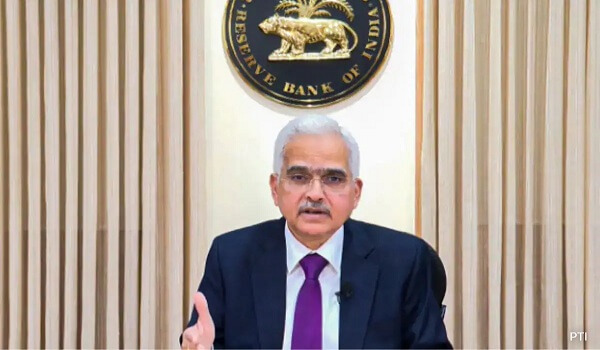The Reserve Bank of India (RBI) Monetary Policy Committee (MPC) has voted by a 4:2 majority to keep the policy repo rate unchanged at 6.5% for eight consecutive times. This information was provided by the RBI Governor Shaktikanta Das on 7 June 2024 while announcing the second bi-monthly monetary policy of the financial year 2024-25.The second bi-monthly Monetary Policy Committee meeting of fiscal year 2024-25 was held on June 5 to 7, 2024. The next meeting of the MPC is scheduled for 6-8 August 2024. The MPC is mandated to meet at least four times in a financial year, which runs from 1 April to 31 March.
Highlights of the 2nd bi-monthly monetary policy of FY 25
- The RBI has not changed its rates or reserve ratios. However, the Reserve Bank of India has increased the expected growth rate for the Indian economy in 2024-25 to 7.2 per cent.
- In the first bi-monthly monetary policy of 2024-25, the RBI forecasted a growth rate of 7 per cent.
Rates and Ratios after the 2nd bi-monthly monetary policy 2024-25
| Policy Repo Rate | 6.5% |
| Fixed Reverse Repo Rate | 3.35% |
| Bank Rate | 6.5% |
| Standing Deposit Facility(SDF) | 6.25% |
| Marginal Standing Facility(MSF) | 6.75% |
| Cash Reserve Ratio(CRR) | 4.50% |
| Statutory Liquidity Ratio(SLR) | 18% |
GDP growth forecast for 2024-25
- The RBI has increased the expected growth rate of India on the back of a higher than expected Q4 2023-24 GDP growth rate of 7.8 per cent.
- The Indian economy grew by 8.2 per cent in 2023-24.
- RBI expects the GDP growth for 2024-25 to be 7.2%.
According to the RBI, the expected growth rate of the Indian economy in the 2024-25 financial year quarters is as follows
| Quarter of Financial Year 2024-25 | Growth Rate |
| Q1(April – June 2024) | 7.3 % |
| Q2(July to November 2024) | 7.2% |
| Q3 (October -December 2024) | 7.3% |
| Q4 (January 2025- March 2025) | 7.2 % |
Policy Initiatives Announced by the RBI Governor
- The RBI governor also announced certain initiatives for the banking sector.
Bulk term Deposits for Banks raised
Banks in India can offer higher interest rates on bulk term deposits. Term deposits refer to Fixed deposits and recurring deposits. Banks offer bulk deposit facilities only for fixed deposits and not for recurring deposits.Now, the RBI has raised the bulk deposit threshold limit for the banks.For Scheduled Commercial Banks and Small Finance Banks, bulk deposit means ‘Single Rupee term deposits of Rs3 crore and above’. In 2019, the RBI has increased it from Rs 1 crore to Rs 2 crore.For the Local Area Banks and the Regional Rural Bank, the bulk deposit means a Single Rupee term deposit of Rs1 crore and above.Banks have the power to decide the interest rates on their deposits. There are two types of deposits: demand deposits and Term deposits. Demand deposits include savings accounts and current accounts.
Committee on Digital Payments Intelligence Platform
- The RBI Governor announced the setting up of a committee to examine various aspects of setting up a digital public infrastructure for the Digital Payments Intelligence Platform.
- The committee will be headed by A.P. Hota.
- RBI has proposed setting up an advanced Digital Payments Intelligence Platform to reduce and eliminate online payment fraud risks.
Monetary Policy Committee
- The Monetary Policy Committee was established by the government of India on 29 September 2016 under the Reserve Bank of India Act 1934.
- The six-member Monetary Policy Committee (MPC), headed by the RBI governor, determines the RBI’s policy interest rate required to achieve the inflation target.
- The members of the Monetary Policy Committee are RBI governor and chairman Shaktikanta Das, deputy governor of RBI Michael Debabrata Patra, Dr Ashima Goyal, Dr Mridul K. Saggar, Dr Shashanka Bhide and Prof. Jayanth R. Verma,
- The MPC has to meet at least four times in a financial year.
- The decision in the Monetary Policy Committee is taken by a majority.

